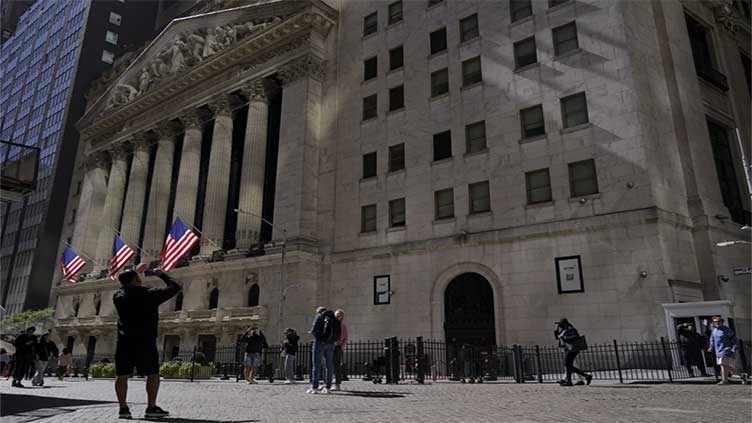Wall Street drifts lower as pressure from the bond market stays high

Business
Wall Street drifts lower as pressure from the bond market stays high
NEW YORK (AP) — Wall Street is drifting lower Thursday, as pressure from the bond market remains high due to worries about a too-hot U.S. job market.
The S&P 500 was 0.4% lower in morning trading, the latest stumble in what’s been an ugly run since the start of August. The Dow Jones Industrial Average was down 31 points, or 0.1%, as of 10:30 a.m. Eastern time, and the Nasdaq composite was 0.6% lower.
Stocks have struggled since the summer under the weight of soaring Treasury yields in the bond market, which undercut stock prices and crimp corporate profits. Yields have leaped as traders acquiesce to a new normal where the Federal Reserve is likely to keep its main interest rate at a high level for a long time, as it tries to extinguish high inflation.
But the worry now is that too strong of a job market could put more upward pressure on inflation. That’s why the Fed has raised its main interest rate to the highest level since 2001, to intentionally slow down the job market.
“Even as the Fed has taken aggressive action to soften labor market conditions, businesses continue to hold on to workers,” said Rubeela Farooqi, chief U.S. economist at High Frequency Economics.
A more comprehensive report on the overall U.S. job market is due Friday, and economists expect it to show hiring slowed to a pace of 163,000 jobs in September from 187,000 in August. Perhaps just as importantly, economists are forecasting the report will show average wages rose 4.3% for workers in September, similar to August’s raise.
After initially jumping on the jobless claims report, the yield on the 10-year Treasury later pulled back. The 10-year yield was at 4.71%, down from 4.73% late Wednesday. Earlier this week, it hit its highest level since 2007.
The 10-year Treasury is the centerpiece of the bond market, and movements in its yield ripple across the entire economy. Where it’s heading in the next three to six months has a wide range of potential outcomes, according to Bruno Braizinha, rates strategist at Bank of America.
Braizinha said the yield could drop back to 4% to 4.25% if upcoming reports show the economy weakening enough to undercut inflation but not so much that it causes a sharp recession. But he also said in a BofA Global Research report that it could top 5.50% if economic data strengthen so much that it pushes the Fed to keep hiking rates.
A recent pullback in the price of oil has offered some relief on the inflation front for both U.S. households and the Federal Reserve. After charging from $70 in the summer to more than $93 last week, the price of a barrel of benchmark U.S. crude has slumped sharply. It inched back up 0.4% to $84.51, a day after tumbling more than $5 for its worst drop in more than a year.
Brent crude, the international standard, lost 0.4% to $85.50 per barrel.
On Wall Street, Clorox fell 8.4% after the company described how big a loss it expects to take for its latest quarter because of its previously disclosed cybersecurity attack. The company said its shipments had been in line with its expectations before the attack caused widespread disruptions.
Rivian Automotive sank 17.2% after the electric vehicle maker said it will raise $1.5 billion by selling debt that could later convert into stock.
On the winning side was Lamb Weston, which sells frozen fries, hash browns and other potato products. It soared 10.1% after reporting stronger profit for its latest quarter than analysts expected. The company also raised its profit forecast for the fiscal year, saying it’s benefiting after raising its prices for its products.
In stock markets abroad, indexes were moving only modestly in Europe and much of Asia. Japan’s Nikkei 225 was an outlier and jumped 1.8%. It’s been one of the world’s better stock markets this year.

